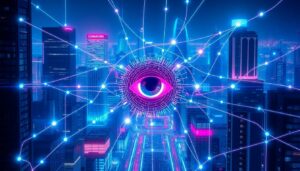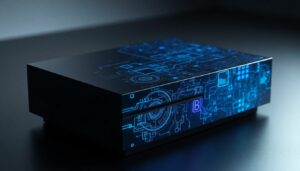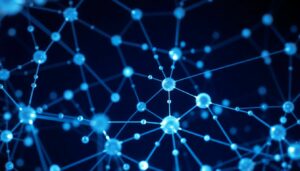Think of it as walking down a street full of people. You identify people, autos and structures instantly. Your brain processes all of this visual information much more rapidly. But how do we get computers to “see” like we do? This is where computer vision comes into play.
Computer vision is a subset of artificial intelligence. It enables computers to find meaning in photographs. It is becoming critical in fields such as health care, manufacturing and autonomous vehicles. Many image processing operations are based on computer vision kernels. They allow us to capture important aspects of images and modify them in ways that are semantically meaningful.
Computer Vision Kernels – What is it?
Computer vision kernels are basically small filters. They drag over an image to change it. They’re what allow computers to comprehend what they “see.” So, what is the mechanics behind these kernels?
Kernel Definition
What is a convolution? A kernel is a little matrix of numbers. This matrix specifies how an operation modifies each pixel. It’s a little recipe for modifying pixel values. Usually, kernels could be of size 3×3, 5×5, etc.
Convolution Operation
here kernel interacting with the image is called Convolution. It also scans the image pixel by pixel. At each position, the kernel is multiplied by the values of the pixels. This weighted sum is used to replace the value of the central pixel.
Types of Kernels
Many types of kernels exist. Blur kernels defocus images. Sharpening kernels accentuate edges. The deterministic kernels of edge detection are sensitive to the boundaries. Such a variety of image manipulation is possible due to such different kernels.
Different Types of Computer Vision Kernels and Their Applications
Here are some common kernels and what they do: Some of them will help you in processing images. One of the real world use cases could be using these kernels in the following way.
Blurring Kernels
In the case of blurring kernels, it is to remove noise and smooth the image. Average blur kernels replace each pixel with the average of neighboring pixel values. The weighted average used in Gaussian blur kernels means the distance of the pixel from the kernel center matters, with closer pixels more heavily weighted. These are good in image pre-processing. This organizes it well for finding relevant features later.
Sharpening Kernels
Sharpening kernels help to sharpen edges and details. They help images to appear sharper. These kernels increase pixel contrast. They help tease out the small details that might go unnoticed.
Edge Detection Kernels
Image Kernels: Edge detection. Horizontal and vertical edges are detected by Sobel kernels. Prewitt kernels are similar, but use a different calculation. Canny edge detector is a bit more complicated. It uses multiple techniques for high accuracy edge detection.
A Practical Guide to Implementing Computer Vision Kernels
Now, let’s get practical. Implementing Kernels You can use different tools to implement kernels. Here is how to do so using OpenCV, TensorFlow, and Keras. How do we improve these implementations for performance?
Using OpenCV
There are many libraries for computer vision, one of which is OpenCV. Its the easiest way to apply kernels in python. Here’s a blink of blurring an image:
import cv2
import numpy as np
Load the image
image = cv2. imread(‘image. jpg’)
Create a blurring kernel
kernel = np. ones((5, 5), np. float32) / 25
Apply the kernel
blurred_image = cv2. filter2D(image, -1, kernel)
Show the blurred image
cv2. imshow(‘Blurred Image’, blurred_image)
cv2.waitKey(0)
cv2.destroyAllWindows()
TensorFlow and Keras
Keras and TensorFlow are some powerful deep learning frameworks. You can implement custom kernels as part of your models. This produces an end-to-end learning.
import tensorflow as tf
Define a custom kernel
kernel = tf. constant([[-1, -1, -1],
[-1, 8, -1],
[-1, -1, -1]], dtype=tf. float32)
Reshaping for convolution
kernel = tf. reshape(kernel, [3, 3, 1, 1])
Convolve the kernel
conv = tf. nn. conv2d(input_image, filters=kernel, strides=[1, 1, 1, 1], padding=’SAME’)
Performance Considerations
One should also focus on Kernel Implementation. That really helps using optimized libraries such as NumPy, OpenCV, etc. Also, look into parallel processing to speed up computations. How can this be further adjusted for better code?
Why kernels are important in CNNs
Kernels are an integral part of Convolutional Neural Networks (CNNs). CNNs form the backbone of many computer vision applications. How do these networks learn kernels and use them?
Convolutional Layers
Kernels are used by convolutional layers that extract features. These so-called layers slide kernels over the input image. Kernels are used to change the input of a layer into a set of feature maps. These maps emphasize critical features, such as edges and textures.
Hand-Designed Kernels vs Learned Kernels
The kernels are static and designed manually. In comparison, learned kernels are flexible. They are learned by CNNs during training. The kernel values are adjusted by the network. This enables it to learn the most useful features for the job.
Kernel Size and Stride
Receptive field is influenced by kernel size. Stride determines the number of pixels the kernel will move. Larger kernels capture more information while smaller kernels capture more details. Bigger kernels pick up larger trends. Stride influences on size of feature map What’s the ideal ratio for your particular application?
Kernel Methods for Computer Vision
And analysis and other kernel methods. These are for helping with complex tasks. Such techniques address complex computer vision problems.
Deformable Kernels
Deformable kernels can deform. They are invariant to variations in object shape. Traditional kernels are inflexible. Deformable kernels offer greater flexibility. They enhance precision with regard to object detection and segmentation.
Graph Convolutional Kernels
Graph convolutionnal kernels are directed towards working on graphs. They are useful in the image segmentation. They’re used for object detection. They take relationships between pixels into account. This leads to better performance on complex scenes.
Sparse Kernels
Almost all values in sparse kernels are zero. So Less computational cost. They also use less memory. Which makes them computationally inexpensive for large images. They are also perfect for real-time applications.
Conclusion
COMPUTER VISION KERNELS TO KNOW AND LEARN ABOUT They’re essential building blocks of both traditional and modern methods. They are essential to the process of blurring, sharpening and edge-finding.
Matthew B. Blaschke: Kernels are still high on deep learning’s agenda. The basis of convulutional neural network powered by this. Kernel research has come a long way. This should open up some exciting new avenues in computer vision.


